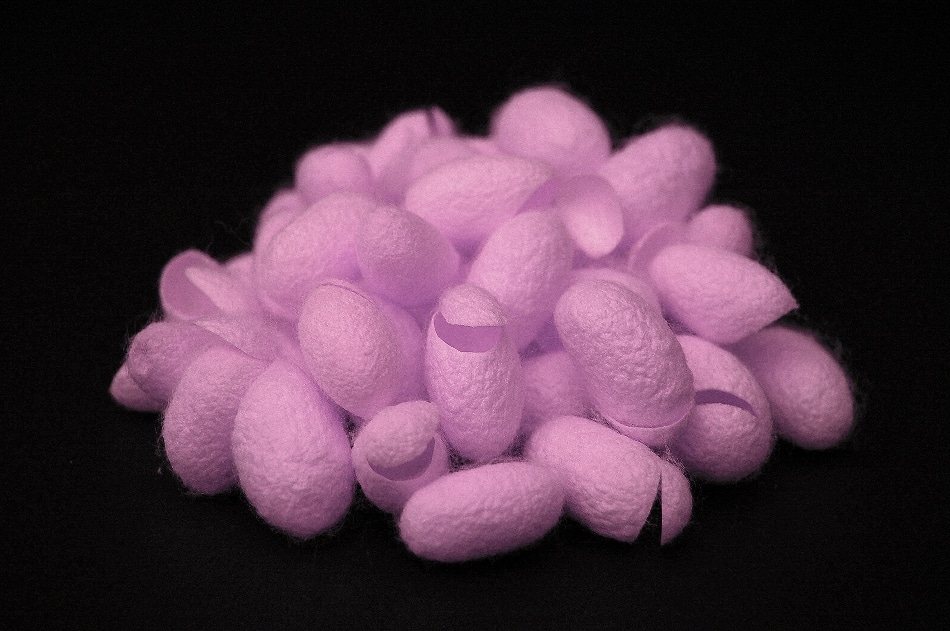Apr 23 2018
Researchers have transferred a far-red fluorescent protein to the genetic composition of a silk hybrid material, thereby enabling the material to attack bacteria upon being illuminated by a green light.
 When a green light shines on red fluorescent silk, a mechanism to kill pathogens is activated. (Image credit: Purdue University image/Jung Woo Leem)
When a green light shines on red fluorescent silk, a mechanism to kill pathogens is activated. (Image credit: Purdue University image/Jung Woo Leem)
Being all-natural, the material would prove to be safer than traditional photocatalytic, or light-activated, methods to destroy harmful pathogens including bacteria, which employ potentially biohazardous semiconductors and need carcinogenic ultraviolet light for activation.
Researchers from Purdue University and the Korean National Institute of Agricultural Research have engineered a silk alternative that alternatively uses visible light and plasmonic photocatalyst-like biomaterials that facilitate environmental remediation including water and air purification as well as wound healing. The results of their study have been reported in early view in the Advanced Science journal on March 12, 2018.
Silk is an ancient and well-known biomaterial. It doesn’t have any issues with the human body. And the nice thing about green light is that it’s not harmful - the color corresponds to the strongest intensity of the solar spectrum.
Young Kim, Purdue Associate Professor of Biomedical Engineering
In order to integrate the advantages of green light and silk, the scientists introduced into a silk host the gene for “mKate2”—a far-red fluorescent protein. Reactive oxygen species (ROS), which are radicals effective for the disintegration of organic contaminants and attacking the membrane and DNA of pathogens, is generated when a green light is shone on the resulting hybrid.
The survival rate of Escherichia coli bacteria present on the fluorescent silk reduced to 45% upon illuminating it with a weak green light for an hour.
The scientists discovered that it was possible to process the hybrid into a film, solution, fabric, and bandage. “We’ve basically added fluorescence to silk to facilitate disinfection or decontamination using just visible light,” stated Jung Woo Leem, a visiting scholar in Purdue’s school of biomedical engineering.
Kim’s research team anticipates that green-light-activated red fluorescent silk can be more scalable as well as more efficient when compared to other plasmonic photocatalysts, in which metal nanoparticles hybridized from semiconductor materials also use visible light but could still cause adverse effects on the environment.
The silk photocatalysts would be easier and safer to produce than plasmonic ones since silkworms, rather than industrial facilities, provide the host for ROS-generating materials. It’s a completely new green manufacturing of nanomaterials.
Young Kim, Purdue Associate Professor of Biomedical Engineering
Since green light is present in ambient white light as well, the researchers expect that the silk hybrid material should generally possess an adequately strong light source to produce ROS provided that green light controls ROS generation.
The intention of Kim and his colleagues is to make the most of silk’s biocompatibility with the human body inside as well as outside. “We’re thinking about some implantable and injectable wound healing materials that dissolve over time in the body. Then we wouldn’t need to do additional surgery to take it out,” Kim stated.
A U.S. patent application for intellectual property protection and commercialization has been filed by the team.